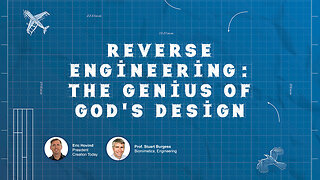Mega-Engineering in the Stars? By Dr. Robert Schoch Atlantis Rising Magazine
Visit Atlantis Rising Research Group at https://www.atlantisrising.com/
To say that Earth’s moon is ‘strange’ is an understatement. In fact, the more we learn about our glowing satellite, the stranger and more mysterious it becomes. Relative to the size of the planet it orbits, Earth, it is the largest moon in the Solar System. It is the second densest, after Jupiter’s Io. Moreover, our moon is in synchronous rotation around Earth, meaning that it always presents the same face to us. Prior to the space program, the far side was often referred to as the “dark side,” not because it is dark (any spot on our Moon, save for the polar regions, experiences roughly two weeks of daylight, alternating with about two weeks of night) but because we never see it.
The average density of the Moon is 3.344 grams per cubic centimeter, about 60 percent of Earth’s, which means it is not an artificial, hollow spaceship as some have believed, although there may well be vast caverns in its crust, including lava tubes dwarfing those on Earth (see sidebar). NASA is already considering the astronaut housing possibilities in such immense spaces beneath the surface. These natural caverns have roofs estimated to be tens of meters thick, which would provide protection from the extreme conditions existing above the surface. The habitat would be protected from solar radiation, micro-meteorites, extreme temperature fluctuations—believed to be stable in lava tubes—as well as winds, and regolith dust storms that could threaten human health and technology. These naturally occurring shelters would also reduce the landed payload mass for manned missions and save on the costs of any mining. More on lava tubes later.
The Moon’s relatively low density means that it has fewer heavy elements than Earth, a slightly different chemical composition. But within each element, like oxygen or iron, there are certain ratios of different isotopes, chemically the same but with different numbers of neutrons in their atomic nuclei. The Moon’s isotope ratios are slightly different than those on Earth, making it possible to identify meteorites of lunar origin, presumably blasted off the Moon by asteroid impacts and found on Earth in places like Antarctica, where they are easy to spot and where we also find meteorites from Mars, with a much different isotope ratio.
The Moon’s formation is a mystery yet to be solved. If Earth and Moon had formed from the same accretion disk, they would have a near identical mix of elements and hence a near identical density, but they don’t. Furthermore, the Earth/Moon system has too much angular momentum to have been formed this way. The Moon orbits Earth west to east (the way the Earth turns on its axis) at just 5.14 degrees off our ecliptic—a plane passing through Earth’s equator. Astronomers believe that the odds against Earth capturing a satellite like the Moon are, well, astronomical. For it to be in its west-to-east equatorial orbit as well, though, is just about impossible.
Visit Atlantis Rising Research Group at https://www.atlantisrising.com/
Mega-Engineering in the Stars? By Dr. Robert Schoch
Over a thousand years ago, while European civilization stagnated during the Dark Ages, did a race of advanced extraterrestrials in a distant part of our galaxy build a huge energy-capturing mega structure around their sun? This may be the story behind an anomalous star known to astronomers as KIC 8462852 (KIC = Kepler Input Catalog of the Kepler space observatory). Informally dubbed “Tabby’s Star,” “Boyajian’s Star” (Tabetha S. Boyajian spearheaded initial analyses of the star), and “WTF Star” (after the title of the paper authored by Boyajian, et al., 2015 [revised 2016], “Planet Hunters X. KIC 8462852 – Where’s the Flux?”, arXiv), this mysterious object continues to elude a satisfactory and wholly convincing “natural” explanation.
Launched in March 2009, the Kepler space observatory was designed to survey the Milky Way searching for exoplanets (planets orbiting around stars other than our Sun). Despite some setbacks, Kepler has been extraordinarily successful in its mission; thousands of exoplanets have been discovered. Extrapolating from the data thus far, possibly our Milky Way Galaxy contains tens of billions of Earth-size planets orbiting stars within habitable zones.
The primary method of detecting such exoplanets is by the periodic dimming of a star as an orbiting exoplanet crosses in front, blocking light. Kepler can continuously monitor approximately 150,000 stars. This brings us to the strangeness of KIC 8462852.
KIC 8462852 has dimmed and then brightened again on numerous occasions, but not in the systematic way that a star typically dims due to an orbiting planet or planets. The dimming, the dips in brightness detected coming from KIC 8462852, occur in a manner that appears random. For instance, after hundreds of days of relative stability, the star dimmed by 15% over several days. Then, after having come back to approximately its original brightness, about 725 or so days later, the star suddenly dimmed by 22% over just a few days, subsequently returning to its previous brightness. Three weeks later, it dimmed by 3% or so. After returning to its previous brightness, not quite a month later it dimmed by 8% for a few days, only to return to its previous brightness once again. To put these levels of dimming into perspective, if our Sun were being observed by an observatory on a distant planet, as Jupiter crossed, the dimming effect would only amount to about 1%.
“Citizen scientists” participating in the “Planet Hunters” project discovered KIC 8462852 collectively. These volunteers sifted through data from Kepler looking for patterns potentially indicative of planets orbiting stars, as well as other interesting or unusual phenomena. Tabetha Boyajian, then a postdoc researcher at Yale University (currently on the faculty of Louisiana State University) was overseeing the Planet Hunters when various participants noticed the strangeness of KIC 8462852. Boyajian became the lead author (along with 48 co-authors) on the initial paper that brought KIC 8462852 to the attention of the general astronomical community and to the world at large.
Other than its odd behavior, KIC 8462852 is not a remarkable star; in fact, it is a rather ordinary F-type main sequence star (our Sun is a G-type main sequence star; stars are classified based on factors such as surface temperature—F-type stars are slightly hotter than G-type stars). Located in the region of the constellation Cygnus at a distance of around 1200 to 1500 light-years from us (estimates vary), KIC 8462852 has an apparent magnitude of about 11 or 12 (far too dim to be seen with the naked eye), an estimated radius of 1.6 times that of our Sun and a mass of about 1.4 times that of our Sun.
Once brought to the awareness of the scientific community, other astronomers began studying KIC 8462852 from different perspectives. Although KIC 8462852 cannot be seen with the naked eye, it has been viewed through telescopes, and photographed, since the late nineteenth century. Analyzing old records and photographic plates, Bradley Schaefer (Louisiana State University) determined that it had dimmed by about 20% in overall brightness during the century from 1890 to 1989. But could this incredibly strange dimming be nothing more than an artifact of the diverse instrumentation used to photograph the star? Despite Schaefer’s careful work, there were doubts. However, using Kepler space observatory data collected from 2009 to 2013, Benjamin Montet (California Institute of Technology and the Harvard-Smithsonian Center for Astrophysics) and Joshua Simon (Observatories of the Carnegie Institution of Washington) found that KIC 8462852 had dimmed by about 3% overall during this period, with 2% to 2.5% of the dimming occurring during an approximately 200-day stretch.
-
 14:50
14:50
markksargent
1 year agoFlat Earth Ally - The Atlantic Magazine with Sam Kriss - Mark Sargent ✅
98 -
 50:47
50:47
Exopolitics Today with Dr. Michael Salla
9 months agoWeek in Review: 08/05/23: David Grusch, Global Elite, Geoengineering, Supersoldiers, Artemis Accords
8.55K16 -
 52:48
52:48
Right2Freedom
11 months agoDr. Lee Merritt & Scott Schara
321 -
 16:39
16:39
Spoken Words in New Mexico
4 months agoFormer Marine And NASA Engineer Turned Activists
1441 -
 14:48
14:48
Ahmed1980
1 year agoNEWS: Starshield from SpaceX NASA Artemis, South Korea Mond, and the Starship Starlink Mars,
21 -
 5:33
5:33
OANN
1 year agoOne-on-One with Dr. Javier Diez-Garias, a professor of mechanical & aerospace engineering at Rutgers
415 -
 37:20
37:20
Creation Today
5 months agoReverse Engineering: The Genius of God’s Design | Eric Hovind & Prof. Stuart Burgess | Creation Today Show #340
171 -
 21:55
21:55
Insights In Automation
7 months agoOctober 18 News: N-Tron Award, TwinCAT3 CNC, Hart Multiplexer, Diving Robot, AI & Robot Myths & more
4 -
 2:20
2:20
CosmicStellar
1 year agoDr. Warner Von Braun on God, father of all modern rocket science
22 -
 0:39
0:39
MatrixMav
1 year agoKlaus Schwab: “Who masters those technologies, in some way, will be the master of the world.”
302